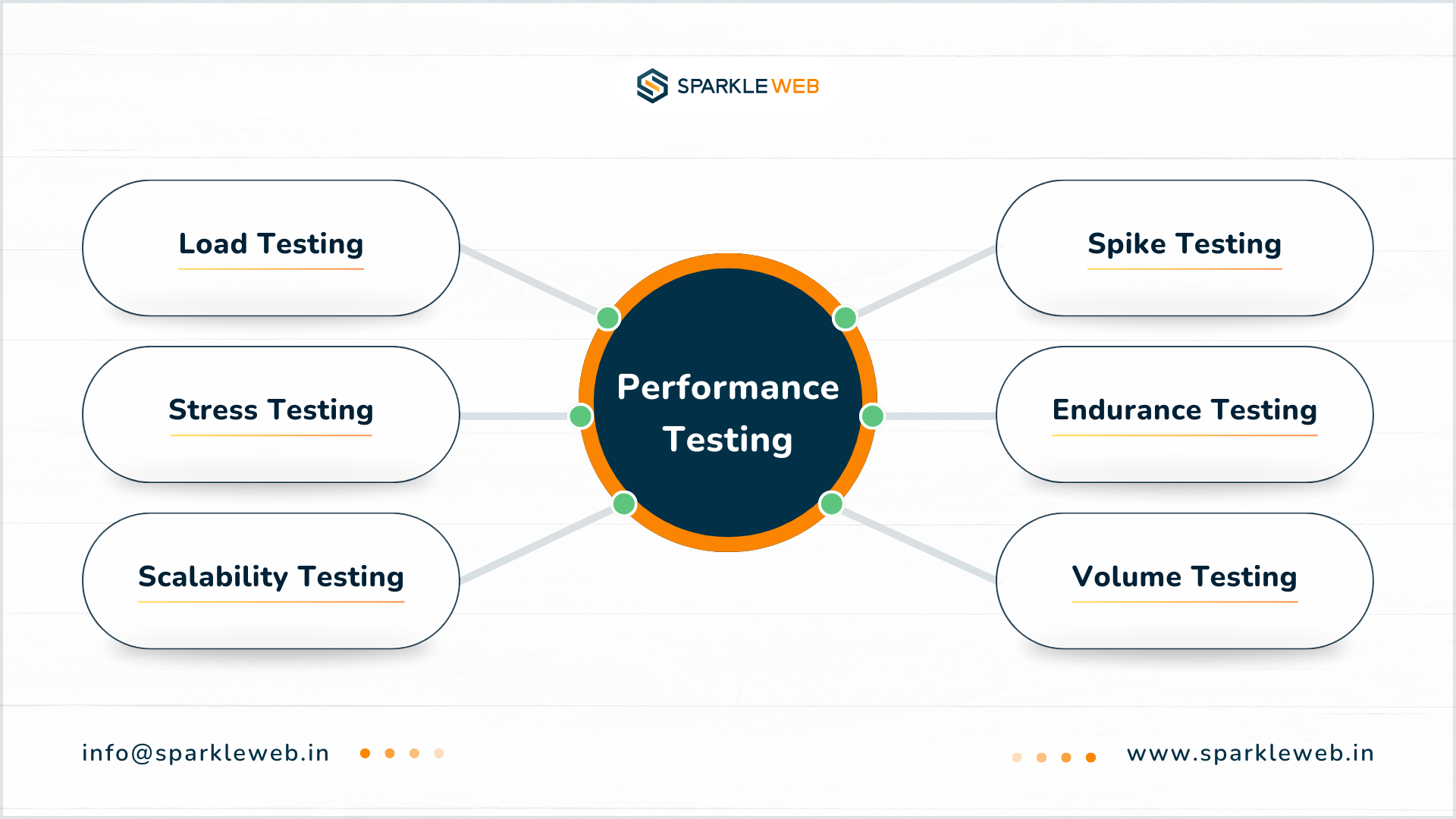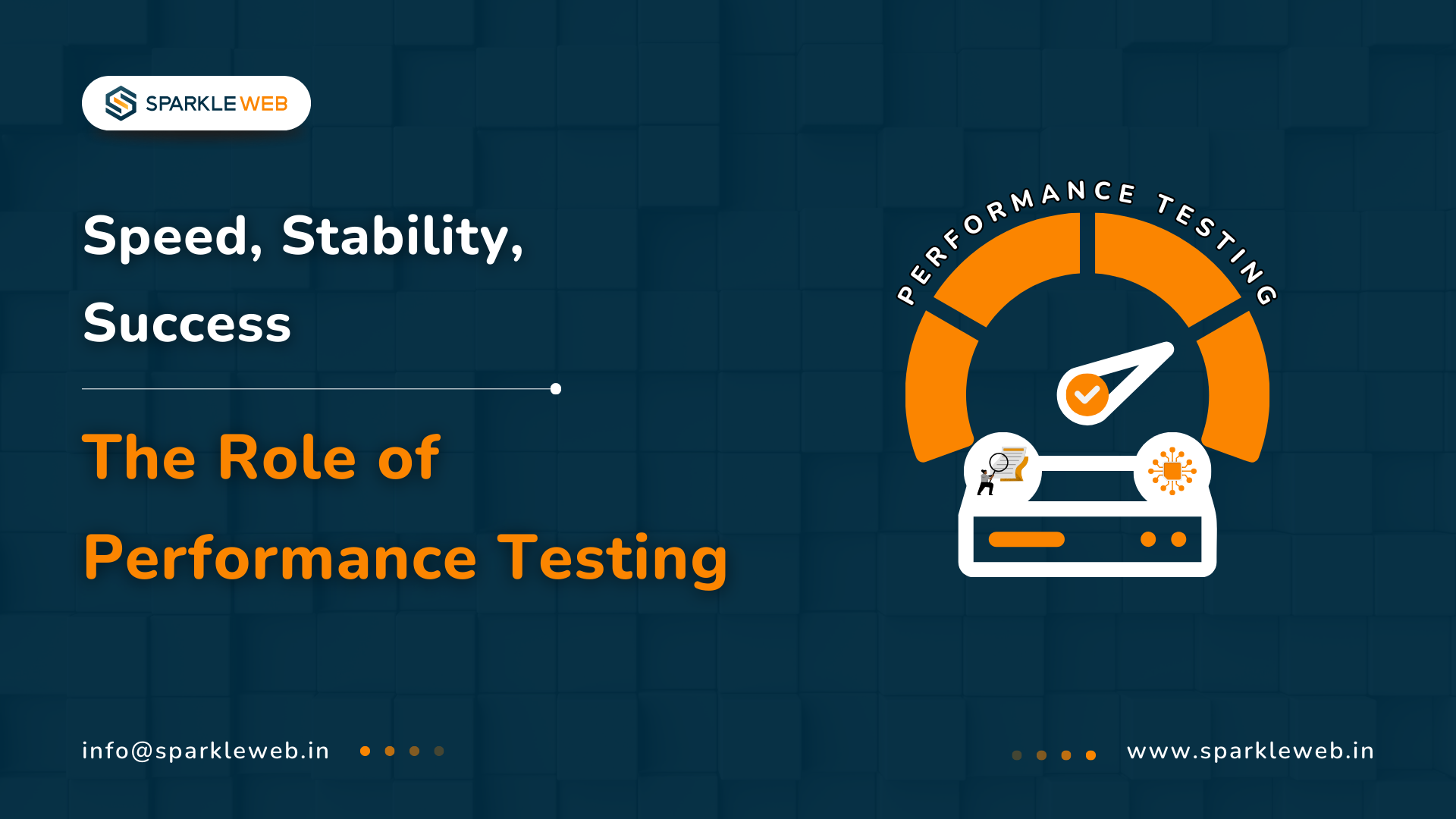What is Performance Testing?
Why is Performance Testing Important?
1. Better User Experience
2. Avoid Downtime
3. Helps with Growth (Scalability)
4. Saves Money
5. Better Use of Resources
Types of Performance Testing

1. Load Testing
-
What it is: Tests how the system works under expected user loads.
-
Why it is important: It makes sure the system can handle normal traffic.
- Example: Testing an online store to handle customers during a regular sale.
- Key Metrics: Response time, number of requests per second, CPU and memory usage.
2. Stress Testing
-
What it is: Tests how the system works under extreme pressure.
-
Why it's important: It helps find the breaking point of the system.
- Example: Testing a news site during a big breaking story.
- Key Metrics: How long it takes to recover after crashing, what breaks under high load.
3. Scalability Testing
-
What it is: Checks if the system can grow with more users or data.
-
Why it’s important: It makes sure the system can expand smoothly.
- Example: A cloud app growing from 1,000 to 10,000 users.
- Key Metrics: Speed and performance as the number of users grows.
4. Spike Testing
-
What it is: Tests how the system handles sudden, sharp increases in users.
-
Why it’s important: It shows if the app can deal with unexpected traffic.
- Example: A music app after a celebrity shares a link.
- Key Metrics: Performance during and after a traffic spike.
5. Endurance Testing (Soak Testing)
-
What it is: It runs the system with a steady load for a long time.
-
Why it’s important: It finds long-term issues like memory leaks.
- Example: Running a social media app for 24 hours with constant users.
- Key Metrics: Memory use, speed over time, system stability.
6. Volume Testing
-
What it is: Tests how the system handles a lot of data.
-
Why it’s important: It makes sure the system doesn't slow down with big data.
- Example: A banking system handling millions of records.
- Key Metrics: Time taken to process data, database response time.
Best Practices for Performance Testing
1. Set Clear Goals
2. Start Early
3. Use Real-Life Scenarios
4. Automate Testing
5. Monitor Everything
6. Test in Different Conditions
7. Fix and Improve
Popular Tools for Performance Testing
-
Apache JMeter: Free and open-source. Great for testing websites and APIs.
-
LoadRunner: A full-featured tool for testing many types of systems.
- Gatling: Easy to use and works well for websites.
- New Relic: Helps you see how apps perform in real time.
-
BlazeMeter: A Cloud tool that works with JMeter and runs big tests easily.
Real-World Insights: Why It Matters in 2025
Your Performance Testing Partner
Let’s Work Together!
-
Fast load times
-
Stable performance
- Easy scaling for growth
Let’s talk about your next project!



Sumit Patil
A highly skilled Quality Analyst Developer. Committed to delivering efficient, high-quality solutions by simplifying complex projects with technical expertise and innovative thinking.
Reply